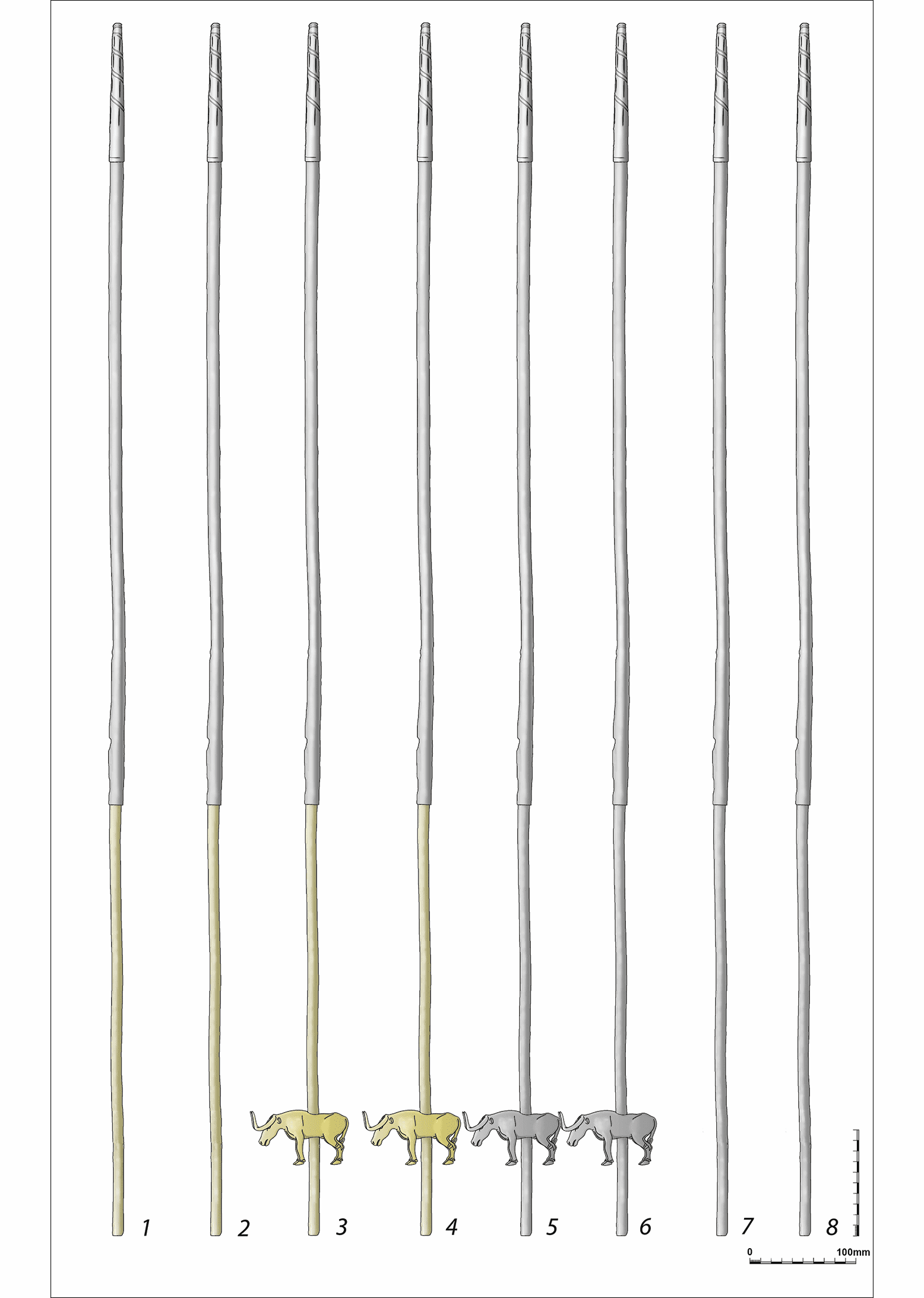A lot has changed for humanity over the last 5,000 years. We invented writing, and built Stonehenge; we survived wave after wave of deadly plagues and even worse medical procedures; we’ve become so technologically advanced, in fact, that it’s probably going to be our own downfall before too long.
But some things are exactly the same – like our propensity to gather in groups and get off our collective faces on booze. Today, that may take the form of cocktail buckets in Ibiza. Back in prehistoric times, it was… pretty much the same, actually.
“I would never have believed that in the most famous elite burial of the Early Bronze Age Caucasus, the main item would be neither weapons nor jewellery, but a set of precious beer-drinking straws,” said Viktor Trifonov from the Institute for the History of Material Culture, Russian Academy of Sciences, St Petersburg, in a statement last year.
“If the interpretation is correct, these fancy devices would be the earliest surviving drinking straws to date,” he added.
“Fancy” is putting it mildly: the eight straws are each over a meter long, crafted from silver and gold, and half are even decorated with bull figurines on the stems. In fact, earlier research didn’t even clock them as drinking straws – first discovered in a grand burial site, or “kurgan”, near Maikop, Southern Russia, all the way back in 1897, they were initially thought to be scepters, or perhaps poles for a canopy.

Schematic drawing of the set of ‘sceptres’ from the Maikop kurgan. Image credit: Trifonov et al, Antiquity, 2022
However, last year, Trifonov and his team took another look at these mysterious tubes – and noticed something familiar. Ancient drinking straws had previously been found in Sumerian archeological sites, hundreds of miles south of Maikop, with contemporary images showing their use in “banquet scenes showing groups of people sipping beer through long tubes from a shared vessel,” the researchers explain in their paper.
Trifonov had a hunch that the Maikop finds might have been used for the same purpose. “The idea of reinterpreting the ‘scepters’ first came to me about a decade ago,” he told NBC – but at the time, nobody seemed interested in his theories.
A few years ago, the team found their smoking gun: like Sumerian straws, the Maikop tubes were equipped with what looked like internal “strainers” at the end. If these really did serve the same purpose as previously identified straws, these would have been for filtering out the lumps and impurities common in ancient beer.
“Beer in the past was probably ‘chunky’ with sediment,” Augusta McMahon, Professor of Mesopotamian Archaeology at the University of Cambridge, who was not involved in the research, told The Guardian last year. “Filter straws were a necessary implement.”
So the team turned their attention to these filters – and that’s when everything slotted into place.
“A turning point was the discovery of the barley starch granules in the residue from the inner surface of one of the straws,” Trifonov said. “This provided direct material evidence of the tubes from the Maikop kurgan being used for drinking.”
To complete the picture of a bunch of ancient Russians getting hammered at a party, the Maikop Kurgan also contained their likely drinking vessel: a big old pottery jar, large enough to provide each of the eight drinkers with about seven pints of beer. And “with four bulls on straws in the jar at once… it would look like a procession of little bulls going around in a circle,” pointed out Mara Horowitz, an assistant professor of archeology at Purchase College in New York, speaking to NBC. “That’s really kind of adorable.”
For Trifonov, the discovery is about far more than just how our ancestors liked to party. Drinking beer communally like this was likely part of aristocratic ceremonies adopted from Mesopotamia, he said – meaning that this practice must have been important and popular enough to spread between the two regions, even all that time ago.
“It’s very exciting to see the degree of connectivity across the Caucasus at this early date,” agreed Horowitz, who was not involved in the study. “It is in the 3rd millennium [BCE] that we have movements of culture and people across the Caucasus in both directions, with major effect on regional cultures.”
The results can be found in the journal Antiquity.
Source Link: Ancient Russians Got Wasted Using 5,000 Year Old Gold And Silver Drinking Straws